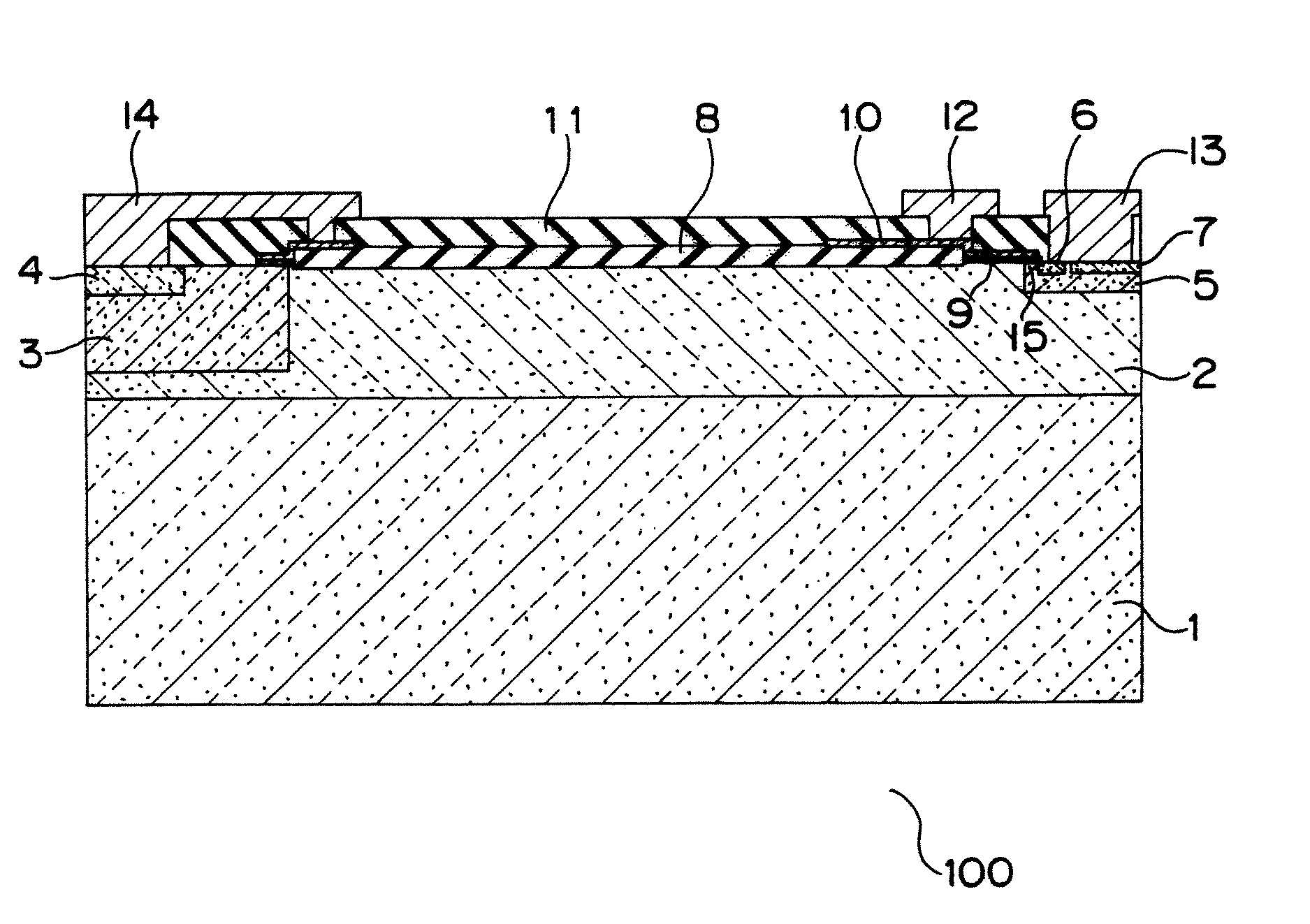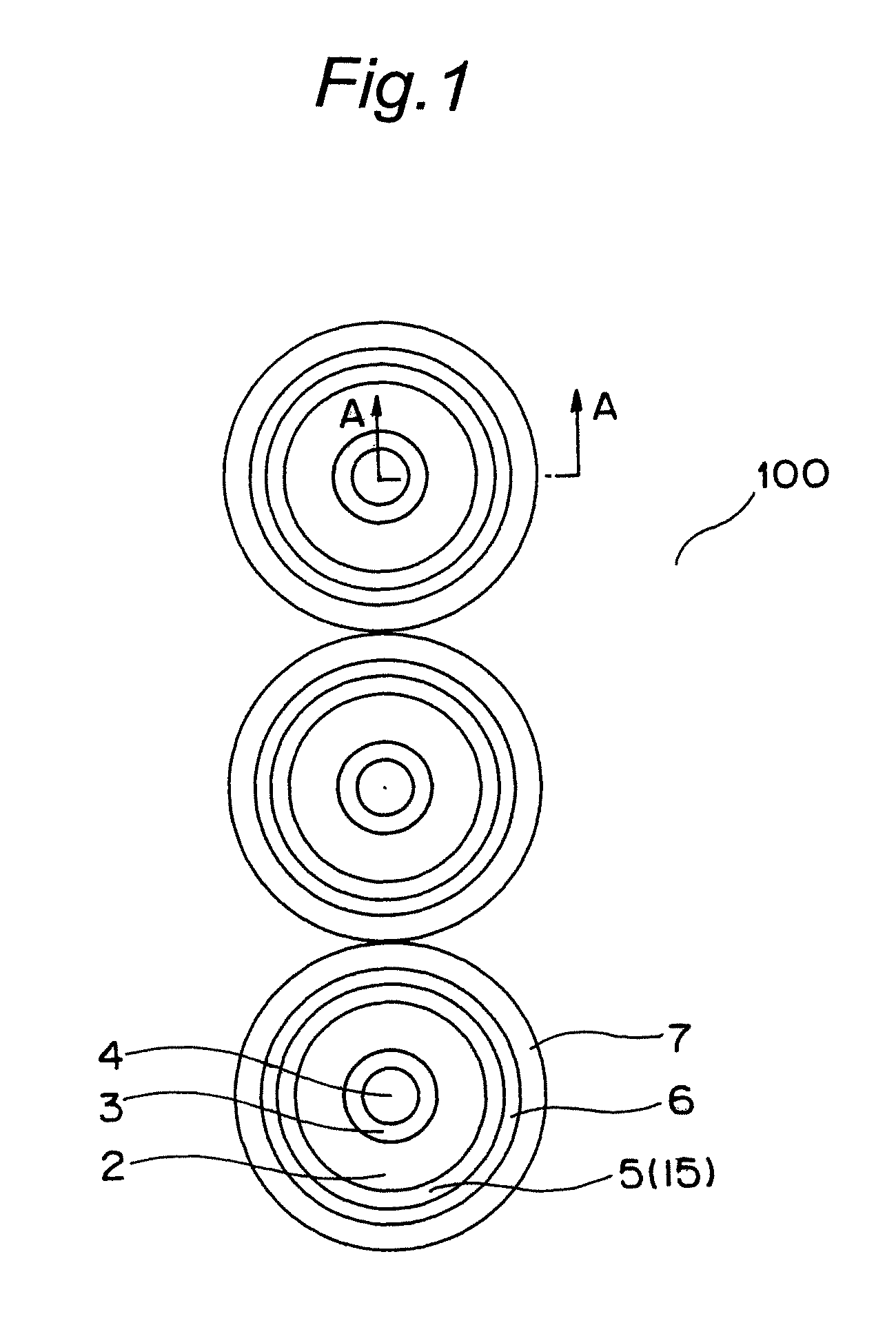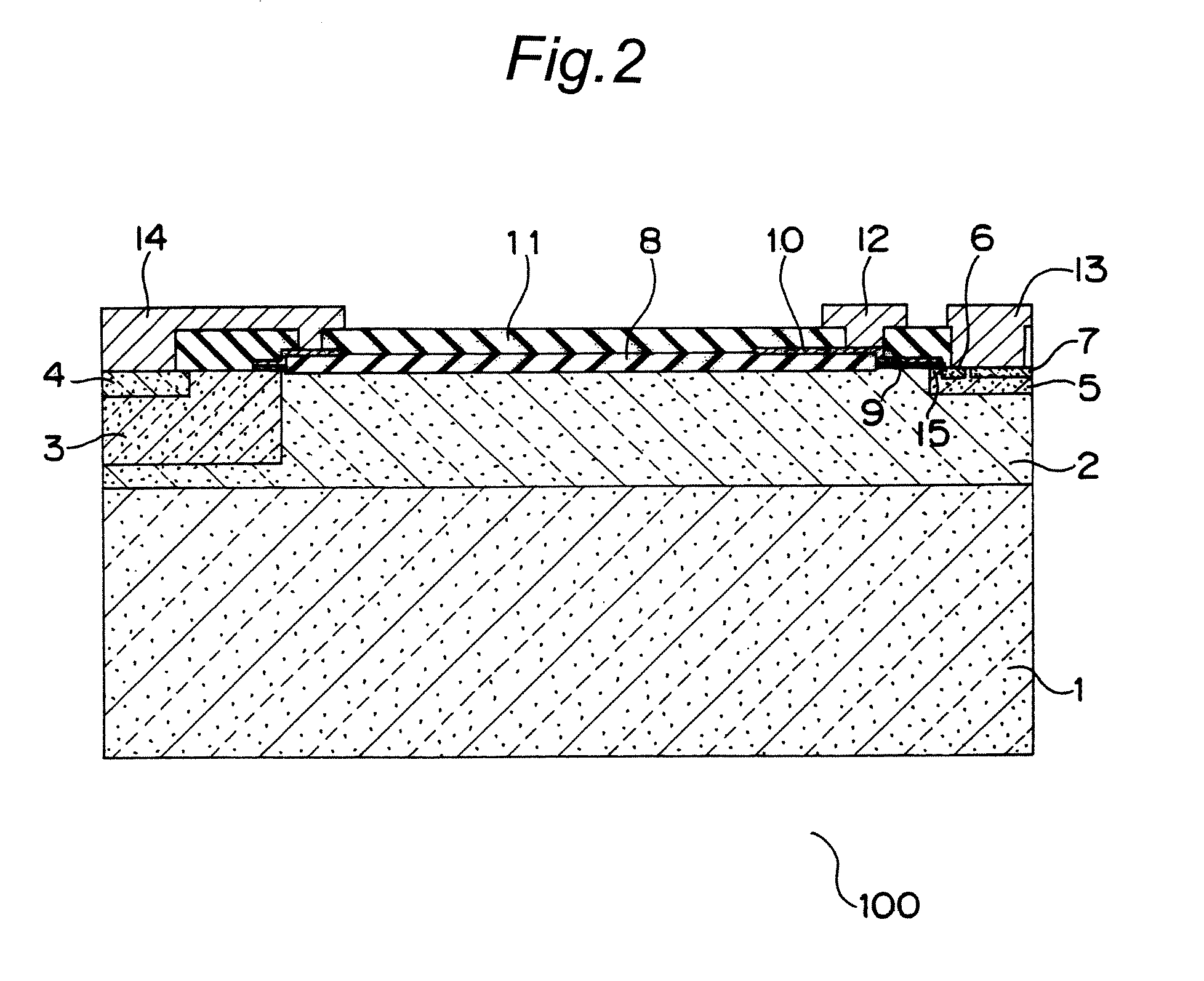Semiconductor device
a technology of semiconductor devices and semiconductors, applied in the direction of semiconductor devices, electrical equipment, plastic recycling, etc., can solve the problems of high switching speed, insufficient isub>ce/sub>, and high isub>ce/sub>, and achieve excellent collector-emitter current characteristics, short fall time, and high latch-up tolerance of parasitic thyristors
- Summary
- Abstract
- Description
- Claims
- Application Information
AI Technical Summary
Benefits of technology
Problems solved by technology
Method used
Image
Examples
embodiment 1
[0077]FIG. 1 is a top view of a horizontal n-channel IGBT (Insulated Gate Bipolar Transistor) according to the embodiment 1 of the present invention generally denoted at 100. FIG. 2 is a cross sectional view of FIG. 1 taken along the direction A-A.
[0078]As shown in FIG. 2, the IGBT 100 includes a p-type substrate 1 of silicon or the like. The p-type substrate 1 seats an n− layer 2 in which an n-type buffer layer 3 is selectively formed. There is a p-type collector layer 4 selectively formed in the n-type buffer layer 3.
[0079]The buffer layer 3 may be omitted (This similarly applies also to the embodiments described below.).
[0080]In the n− layer 2, the p-type base layer 5 is selectively formed in over a predetermined distance from the p-type collector layer 4. In the p-type base layer 5, the n-type emitter layers (n+) 6 are selectively formed so that they are located on the inner side relative to a peripheral portion of the p-type base layer 5 and shallower than the p-type base layer...
embodiment 2
[0096]FIG. 9 is a top view of a horizontal n-channel IGBT according to the embodiment 2 of the present invention generally denoted at 200. FIG. 10 is a cross sectional view of FIG. 9 taken along the direction B-B. In FIGS. 9 and 10, the same reference symbols as those appearing in FIGS. 1 and 2 denote the same or corresponding portions.
[0097]As shown in FIG. 10, the IGBT 200 has an SOI structure in which a buried oxide film 20 which may be a silicon oxide film for example is formed between the p-type substrate 1 and the n− layer 2. The structure is otherwise the same as that of the IGBT 100. The structure of the IGBT 200 shown in the top view in FIG. 9 is the same as the structure of the IGBT 100 shown in FIG. 2. In this structure, the conductivity type of the substrate 1 can be chosen irrespectively of the conductivity type of the n− layer 2.
[0098]FIG. 11 is a top view of another IGBT according to the embodiment 2 of the present invention generally denoted at 250. This is the same ...
embodiment 3
[0117]FIG. 19 is a cross sectional view of a horizontal n-channel IGBT according to the embodiment 3 of the present invention generally denoted at 300, which is illustration viewed from the same direction as the A-A direction in FIG. 1. In FIG. 19, the same reference symbols as those appearing in FIG. 2 denote the same or corresponding portions.
[0118]The IGBT 300 shown in FIG. 19 includes, on the emitter side, a p− layer 30 which is formed narrower and deeper than the p-type base layer 5 but not deep enough to reach the p-type substrate 1 in such a manner that it contacts the bottom surface of the p-type base layer 5. The structure is otherwise the same as that of the IGBT 100 which is shown in FIG. 2.
[0119]FIG. 20 is a cross sectional view of other horizontal n-channel IGBT according to the embodiment 3 of the present invention generally denoted at 350, which is illustration viewed from the same direction as the B-B direction in FIG. 9. In FIG. 20, the same reference symbols as tho...
PUM
| Property | Measurement | Unit |
|---|---|---|
| fall time | aaaaa | aaaaa |
| fall time | aaaaa | aaaaa |
| conductivity | aaaaa | aaaaa |
Abstract
Description
Claims
Application Information
 Login to View More
Login to View More - R&D
- Intellectual Property
- Life Sciences
- Materials
- Tech Scout
- Unparalleled Data Quality
- Higher Quality Content
- 60% Fewer Hallucinations
Browse by: Latest US Patents, China's latest patents, Technical Efficacy Thesaurus, Application Domain, Technology Topic, Popular Technical Reports.
© 2025 PatSnap. All rights reserved.Legal|Privacy policy|Modern Slavery Act Transparency Statement|Sitemap|About US| Contact US: help@patsnap.com



